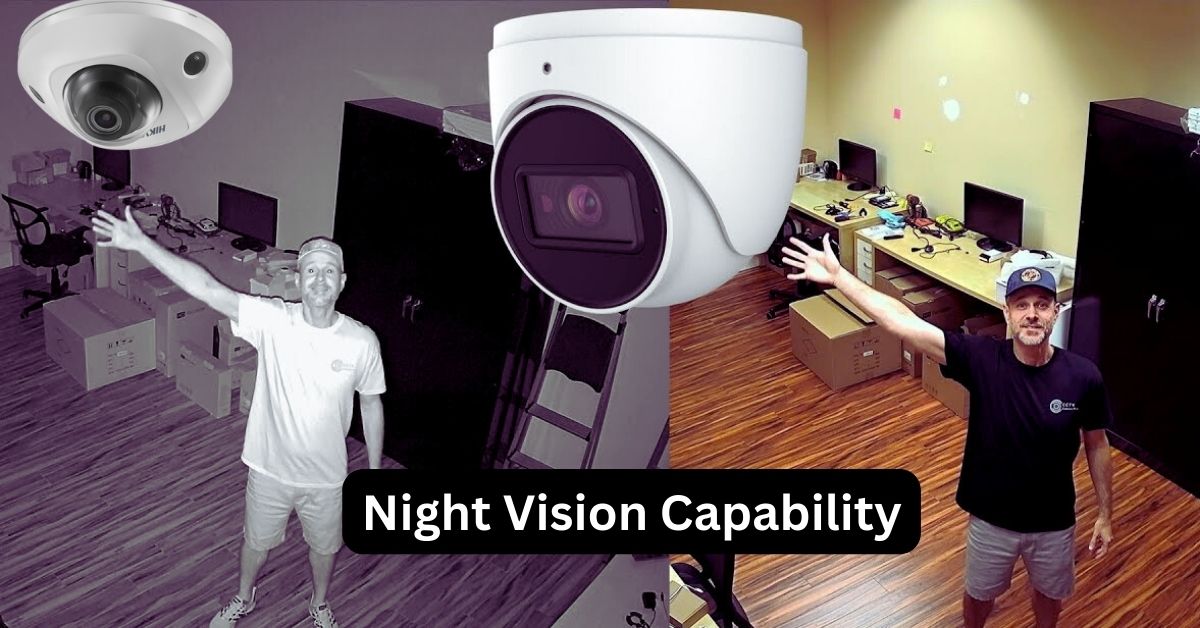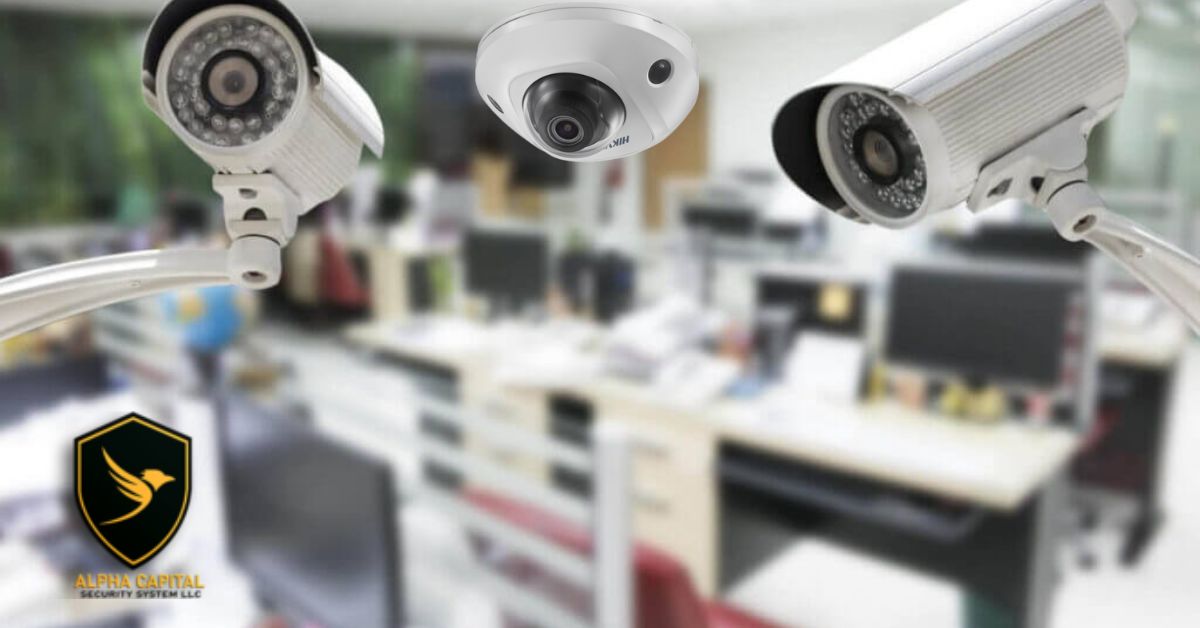CCTV Camera Installation Errors
CCTV cameras are essential for ensuring security and surveillance in various settings, from homes to businesses and public areas. Proper installation of CCTV cameras is crucial to maximize their effectiveness. However, even with the best equipment, errors during installation can hinder their functionality and compromise security.
Here we will explore the most common CCTV camera installation errors and provide the best ways to solve them, ensuring a reliable and efficient surveillance system.
1. Power and Connectivity Issues
One of the most frequent challenges faced during CCTV camera installations is power and connectivity-related problems. Cameras that lose power or struggle to establish a stable network connection can render the entire surveillance system useless. To combat these issues, follow these steps:
Checking Power Supply and Voltage
In CCTV Camera Installation Errors Ensure that each camera has access to a stable power supply. Loose power cables or faulty power sources can disrupt camera operations. Additionally, verify that the voltage requirements of the cameras match the supplied power to avoid potential damage.
Verifying Network Connections
Inspect all network connections thoroughly. Loose Ethernet cables or poor Wi-Fi signals can lead to intermittent camera disconnections. Use quality network cables and consider using surge protectors to safeguard the cameras from electrical fluctuations.
Using Surge Protectors
Power surges can occur unexpectedly and may harm sensitive camera components. Installing surge protectors can safeguard cameras from sudden voltage spikes and help maintain their longevity.
2. Incorrect Camera Placement
Camera placement plays a pivotal role in maximizing surveillance coverage. Incorrectly positioned cameras may leave blind spots, reducing the effectiveness of the entire CCTV system. To rectify this and resolve CCTV Camera Installation Errors, follow these steps:
Reevaluating Camera Angles and Coverage Areas
Carefully reassess the camera angles and coverage areas. Adjust the camera positioning to capture essential points of interest, such as entrances, exits, and high-traffic areas.
Avoiding Obstructions and Glare
Ensure that cameras are not obstructed by obstacles like trees, walls, or signs. Additionally, take measures to minimize glare or reflections caused by direct sunlight or artificial lighting sources.
Ensuring Proper Height and Tilt
Mount the cameras at an appropriate height to capture clear and unobstructed views. Consider the tilt of the camera to obtain the best possible angle for optimal coverage.
3. Inadequate Lighting
Inadequate lighting conditions can severely impact the quality of CCTV footage, especially during nighttime surveillance. To overcome this challenge, consider the following:
Choosing Cameras with Night Vision Capability
Opt for cameras equipped with infrared (IR) or low-light technology to capture clear images even in complete darkness. When setting up a CCTV surveillance system, it’s essential to choose cameras that are equipped with night vision capability.

Night vision technology allows cameras to capture clear images even in complete darkness, making it a critical feature for 24/7 monitoring. The two most common night vision technologies used in CCTV cameras are infrared (IR) and low-light technology.
Installing Additional Lighting Sources
Supplement existing lighting by adding outdoor lights or infrared illuminators to enhance visibility in poorly lit areas. In some situations, relying solely on night vision capabilities may not provide the desired level of image clarity and detail. To resolve CCTV Camera Installation Errors and enhance visibility in poorly lit areas, it is advisable to install additional lighting sources that complement the CCTV cameras.
Adjusting Camera Settings for Low-Light Conditions
Fine-tune the camera settings to improve performance in low-light situations. To solve CCTV Camera Installation Errors adjust the exposure, gain, and shutter speed to optimize image clarity.
Fine-tuning the camera settings is a crucial step in optimizing the performance of CCTV cameras in low-light situations. The correct settings can significantly improve image clarity and visibility
4. Unsecured Camera Mounting
Camera mounting should be sturdy and tamper-resistant to prevent unauthorized adjustments or vandalism. To solve CCTV Camera Installation Errors follow these guidelines:
Selecting Suitable Mounting Surfaces
Choose robust surfaces for camera installation, such as concrete walls or metal poles, to deter tampering.
Using Tamper-Resistant Camera Housing
Opt for cameras with vandal-proof housings to safeguard sensitive components from malicious tampering.
Concealing Wires and Cables
Hide wires and cables effectively to prevent intruders from tampering with or cutting off camera connections.
5. Lack of Proper Focus and Calibration
Blurred or misaligned cameras can lead to unclear images, making it difficult to identify subjects. To address this, follow these steps:

Calibrating Camera Settings
Ensure that the camera settings, including resolution, contrast, and brightness, are correctly calibrated for optimal performance.
Calibrating camera settings is a critical step in ensuring optimal performance and image quality for CCTV cameras. Proper calibration ensures that the camera captures clear and detailed footage, making it easier to identify subjects and events.
Fine-tuning Focus and Zoom
To resolve CCTV Camera Installation Errors adjust the focus and zoom settings to achieve clear and sharp images. This step is crucial after changing the camera’s position or lens. After positioning the camera or changing lenses, fine-tuning the focus and zoom settings is crucial for obtaining clear and sharp images.
Focus Assist Tools: Some cameras have focus assist tools, such as focus peaking or magnification, which help identify the sharpest areas in the image during manual focus adjustments.
Auto Focus: Cameras with auto-focus capabilities offer convenience and speed in achieving accurate focus. The camera automatically adjusts the focus based on the scene, ensuring that the subjects are clear and sharp
Utilizing Auto-Focus Features
Consider using cameras with auto-focus capabilities to maintain sharp image quality at all times. Cameras with auto-focus capabilities offer a hassle-free solution for maintaining sharp image quality at all times.
Auto-focus continuously adjusts the focus as the scene changes, CCTV Camera Installation Errors ensure that objects and individuals remain clear and in focus.
6. Wiring Problems
Untidy or improperly organized cables can lead to signal interference and potential system failures. To resolve wiring issues, take the following steps:
Organizing and Labeling Cables
Proper organization and labeling of cables during CCTV camera installation are essential for maintaining a well-structured and functional surveillance system. This practice not only ensures a tidy appearance but also simplifies troubleshooting and maintenance tasks in the future.
For solving CCTV Camera Installation Errors Neatly organize and label all cables during installation. This practice simplifies troubleshooting and maintenance in the future.
Eliminating Loose Connections
Loose connections can lead to intermittent signal disruptions, video loss, and other camera performance issues. It is crucial to ensure that all connections are secure and properly plugged in during the CCTV camera installation.
Check all connections to ensure they are secure and properly plugged in. Loose connections can disrupt the camera’s performance.
Protecting Cables from Environmental Factors
Shield cables from harsh weather conditions or physical damage by using protective conduits or cable covers. Cables used in CCTV installations are susceptible to damage from environmental factors such as:
- harsh weather conditions,
- moisture
- physical wear.
To safeguard the cables and maintain their functionality, protective measures are necessary
Conclusion
Properly addressing CCTV camera installation errors is essential to maintain the efficiency and effectiveness of the surveillance system. By tackling power and connectivity issues, correcting camera placement, improving lighting conditions, securing camera mounting, adjusting focus and calibration, and resolving wiring problems, users can ensure that their CCTV cameras perform optimally.
A carefully installed and well-maintained CCTV system provides peace of mind, offering a strong deterrent against potential intruders and helping to create a safer environment. Regular maintenance and periodic checks are vital to ensuring that the surveillance system continues to function flawlessly and provide the utmost security.
Contact Us: To Resolve any CCTV Camera Installation Errors
FAQs:
Q: How to solve CCTV camera problems?
If you encounter issues with your CCTV camera, start by checking the power supply and connectivity. To solve CCTV Camera Installation Errors ensure the camera is receiving proper power and is connected to the network. If the problem persists, review the camera’s settings and consider rebooting the system.
Q: What are the common faults with CCTV systems?
Common faults in CCTV systems include power failures, network connectivity issues, blurred or misaligned camera views, inadequate lighting, and loose or damaged cables.
Q: What causes CCTV failure?
CCTV failure can be caused by various factors, including power supply disruptions, network connectivity problems, incorrect camera placement, insufficient lighting, tampering or vandalism, and wiring issues.
Q: Which cable is used in CCTV?
The most common type of cable used in CCTV installations is the RG59 coaxial cable, often combined with a power cable for the camera’s power supply. For longer distances, RG6 coaxial cables may be used to reduce signal loss.

